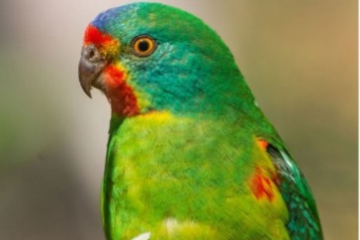We have about 1,700 described native bee species in Australia (and many remain undescribed), found in all terrestrial habitats and displaying a wide array of social behaviours, although most are solitary.
Apparently we have the most distinctive continental bee fauna in the world and Australia is the only continent where most bees are dependent on a single family of plants – the Myrtaceae (which does give them a pretty big choice!) including theEucalyptus, Leptospermum, Melaleuca and Callistemon genera. As well as bees being dependent on flowering plants for nectar and pollen, flowering plants rely on bees (and other animals) to provide pollination.
The only non-indigenous bees in Australia are the honeybee Apis mellifera and the bumblebee Bombus terrestris.
So where do we find out about our native bees? Good question!
There doesn’t seem to be much information around. In 1992 I listened to Dr. Peter Bernhardt, a visiting botanist, talk to a native plant group about Hibbertias and the subject of their pollinators – native bees – came up. He said the bees go into Hibbertias for pollen (which is 45% protein and fat) to feed baby bees and go to other plants for nectar to feed adults. He said there is a partnership between nectarless flowers, flowers with nectar and bees. He mentioned a book written in the 1930’s – “A Cluster of Bees” by Rayment – as being the only book on the subject. Peter said that most native bees were less than 7 mm long (and that was a large bee) and were active on bright, sunny days, mid 20’s, between 10.00 am and 1.00 pm. Sounded like a nice life!
Since then Dr. Bernhardt has mentioned native bees in his writing. The most recent I’ve seen is an article of his called “The floral ecology of Dianella caerulea var. assera (Phormiaceae)” in Cunninghamia 4(1) 1-141.1995 (the journal of plant ecology published by the National Herbarium of NSW).
There is also a very good article called “Biodiversity of Australian Native Bees: Status, Value and Threats” by Allan Spessa, a PhD student at the Australian National University, in BIOLINKS Issue no. 9, July 1995 produced by the Department of Environment, Sport and Territories.
Better still, on the outskirts of Sydney live Anne and Les Dollin who have set up the Australian Native Bee Research Centre. The following article on stingless bees is written by them. They are also in the process of writing some booklets on native bee biology, husbandry etc. which are expected out in a few months and they are hoping to be able to provide native hives in the future. Anne and Les’ contact address is at the end of their article.
Happy native bee discovering!
Danie Ondinea
Dr Peter Bernhardt responded to the above note with the following comments:
“Those interested in native bees should purchase a copy of Native Bees of the Sydney Region; A Field Guide by Anne Dollin, Michael Batley, Martyn Robinson & Brian Faulkner (2000; Australian Native Bee Research Centre, PO Box 74, North Richmond NSW 2754).
Readers should understand that the 1700, or so, species of native bees in Australia represent at least four different families of insects. The majority of acacias are pollinated, at least in part, by bees and the same can be said for most Australian members of the pea and bean family and most guinea flowers (Hibbertia). Those interested in their role in the pollination of summer and autumn flowering snotty gobbles (Persoonia) might consider looking up Bernhardt, P. & Weston, P.H. (1996) The Pollination Ecology of Persoonia (Proteaceae) in Eastern Australia (in) Telopea 6: 775-803.
My most recent book, The Rose’s Kiss; A Natural History of Flowers (Island/Shearwater Press, 2000; available in Australia through Harcourt) introduces the Australian Fu Manchu bee in Chapter 12. Those who would like to learn a bit more about these bizarre, tiny bees should consult, Bernhardt, P. and Walker, K. (1996) Observations on the foraging preferences of Leioproctus (Filiglossa) Rayment (Hymenoptera; Colletidae) in eastern Australia published in the journal Pan-Pacific Entomologist 72: 130-137.”


Leave A Comment